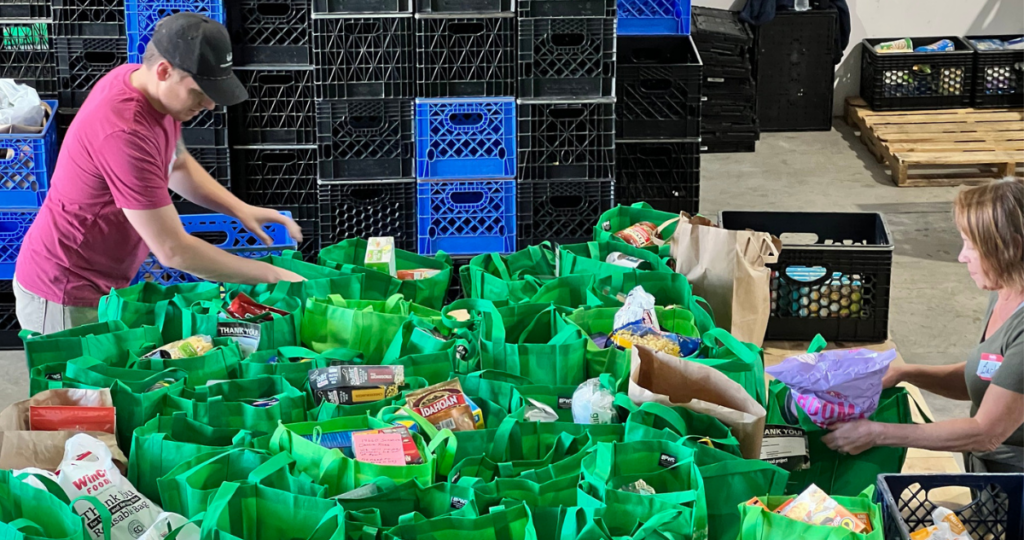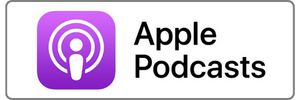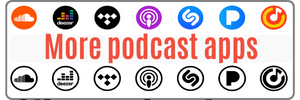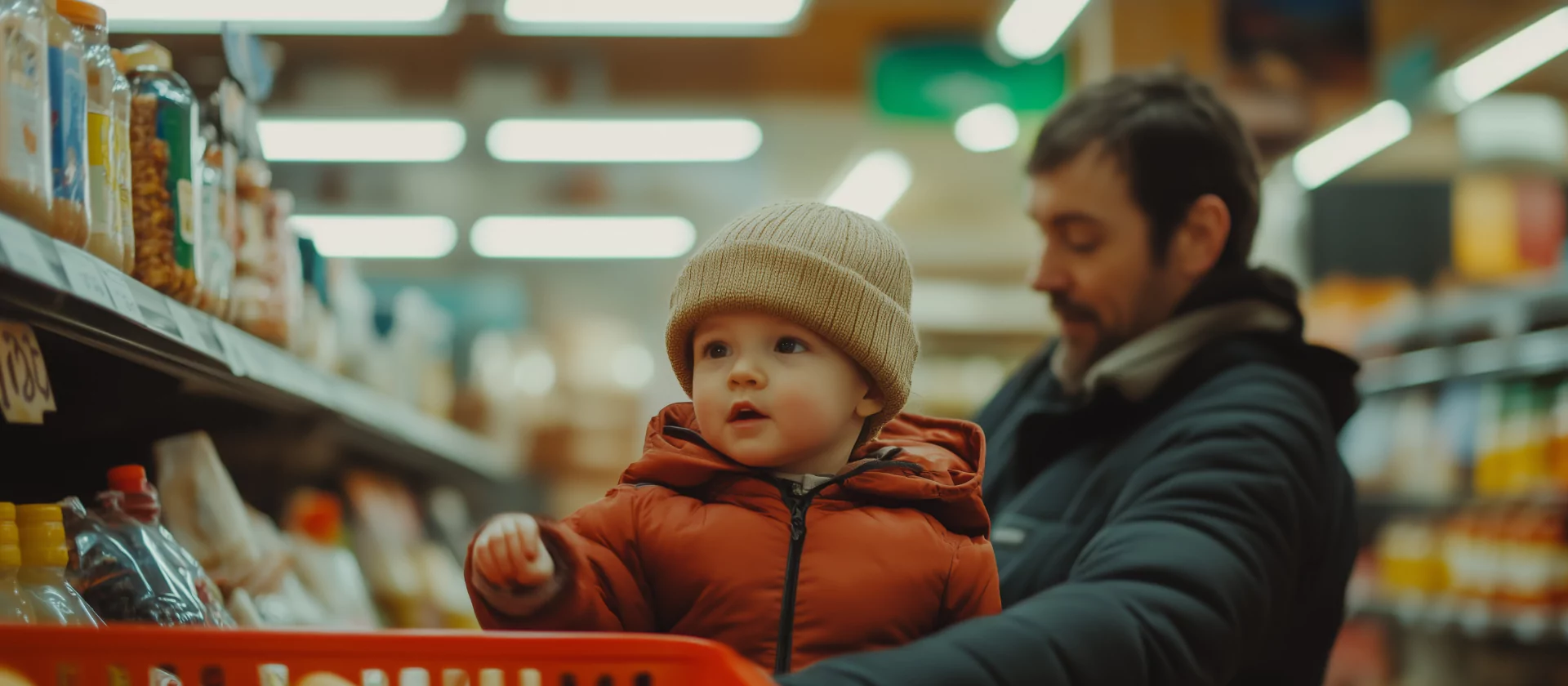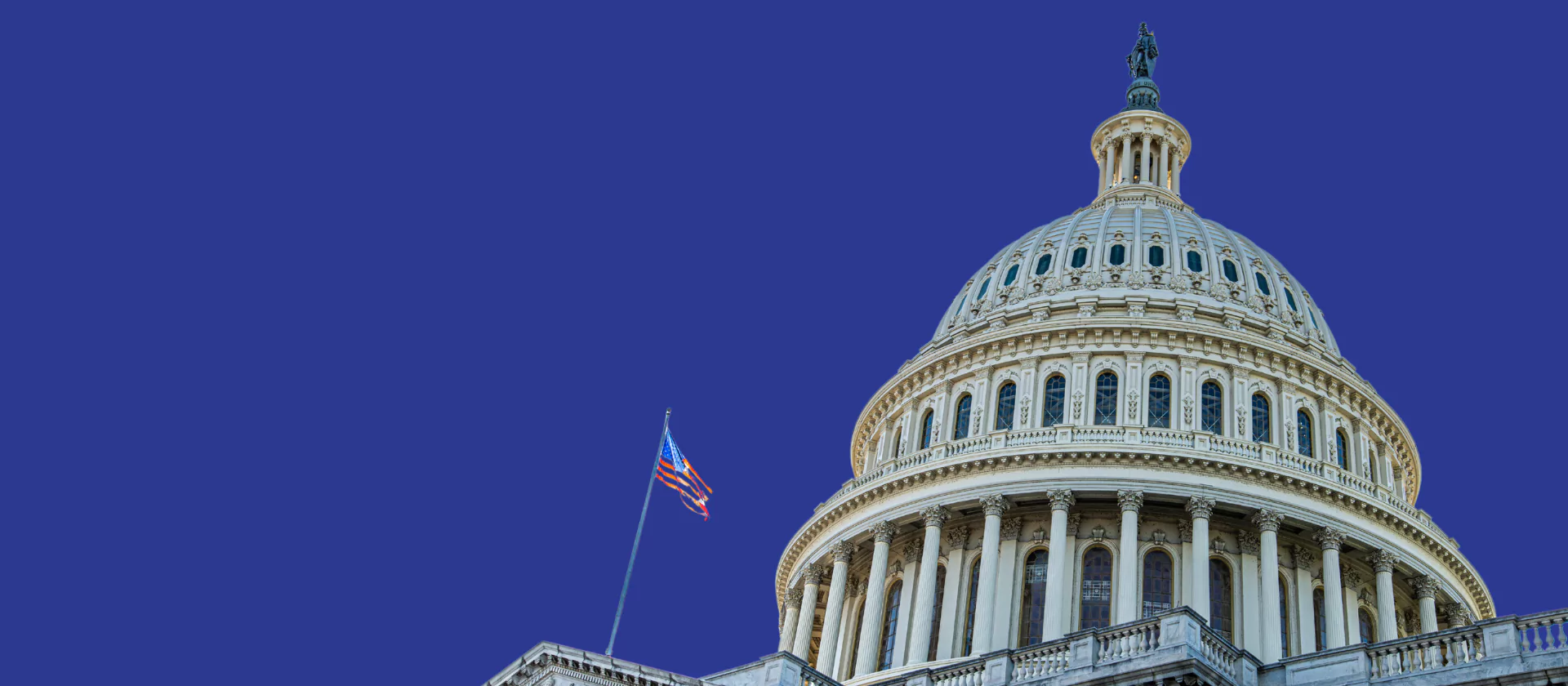Hunger in Oregon is rising rapidly, a reflection of the economic insecurity afflicting so many families.
In this episode of Policy for the People, we speak with Susannah Morgan, President of the Oregon Food Bank. As Susannah explains, the level of hunger right now is the worst that she has seen in her 28 years of working in food banks in several states.
But as she points out, neither hunger nor poverty are inevitable. They are the result of public policy choices, and we can make better policy choices.
Transcript
We make this transcript available for your convenience and to increase the accessibility of our content. The transcript was generated by software and was slightly edited for clarity. If you are able to, we encourage you to listen to the recording.
It is said that hunger is the canary in the coal mine of household economic suffering. For cash-strapped families having a hard time covering all their basic needs, food is often the first item sacrificed. Better to skip some meals than lose the apartment, the thinking goes. And right now, the canary is sending a loud warning call. Hunger is rising rapidly.
In this episode of Policy for the People we speak with Susannah Morgan, President of the Oregon Food Bank, about the state of hunger in Oregon. Susannah has led the Oregon Food Bank since November 2012. As she explains, the level of hunger right now is the worst that she has seen in her 28 years of working in food banks in several states.
And this is a reflection of the economic insecurity afflicting so many families. But as she points out, neither hunger nor poverty are inevitable. They are the result of public policy choices, and we can make better choices.
Juan Carlos Ordóñez (host): I imagine that many of our listeners have heard of the Oregon Food Bank, but they may not know a lot about the organization. Can you share with our listeners a little bit about the Oregon Food Bank and its work to prevent hunger in our communities?
Susannah Morgan: Oregon Food Bank’s mission is to eliminate hunger and its root causes. So we do two interconnected things. We are at the center of the food assistance network across Oregon and Southwest Washington and help move real food to real people throughout 37 counties. And we are also a prime mover and shaker in the movement to end hunger through tackling its root causes, such as systemic inequities in housing and income — all of the things that make people end up in a food assistance line in the first place.
Juan Carlos: So you mentioned the root causes of hunger, which gets to my next question. Why is it that in one of the wealthiest nations in history there are people who are having a hard time putting food on the table?
Susannah Morgan Yeah, fundamentally hunger is caused by poverty. And poverty is caused by, in many cases, systemic inequities, racism, sexism, ableism, xenophobia, transphobia. And so when we look at trying to end hunger, we have to go deeper to these poverty issues and to the equity issues even below the poverty issues. So when we think about why the wealthiest country in the world has a huge amount of poverty, we have to ask ourselves, well, how widespread is poverty?
And the answer is, as you well know, it’s huge. The Federal Reserve has found that 40% of Americans could not find $400 in cash if they need it for a car breaking down or hot water boiler blowing up. So that means 40% of Americans are living on a day-to-day basis, on a financial edge. And many have already fallen off. So when people say, gosh, Susanna, you’re serving almost one in three people with food assistance in Oregon, I say, yeah, I got to do more because I haven’t gotten to 40% yet. That’s how large the problem is.
Juan Carlos: Speaking of how large the problem is, how would you describe the state of hunger in Oregon presently? Can you go a little bit deeper into just how bad the problem is here in Oregon?
Susannah Morgan Yeah, this is my 28th year in food banking, Juan Carlos, in Oregon, Alaska, Boston, California. So I’ve done it in big and small places, rural and urban places. And this is the worst hunger has ever been in my career. And the data tells us this is the highest level of hunger this country has seen since the Great Depression of the 1930s.
Right now, we think that about 1.5 million people will ask for food assistance in Oregon and southwest Washington this year. Given that the population base is, as you know, about four-and-a-half million for those 37 counties, that means one in three people will ask for food assistance at least once during the year.
And sometimes I get asked, what does a person experiencing hunger look like? And I’m like, they look like you and me. We’re talking about one third of folks. We ought to just be grateful if it isn’t us who have to ask for the food assistance at this time. But it’s mostly people who are working. It’s folks on a limited income, such as a pension or disability. And it’s tons and tons of kids. About 50% of our kids are growing up at or around poverty.
Juan Carlos: Are there parts of the state or particular communities where the problem of hunger is even more pronounced?
Susannah Morgan: Hunger is even more pronounced in the communities that have an intersection with a systemic inequity. So hunger is much more pronounced in the Black community than it is in the white community. Hunger is much more pronounced in the trans community than it is in the cis community. Hunger is much more pronounced and disproportionate in our immigrant, migrant and refugee communities than it is in those who have citizenship.
So where you see the intersection between these systemic inequities and poverty is where the deepest pockets of hunger lie. It’s not geographic. I mean, obviously there are more people who are hungry where there are more people. But fundamentally, hunger isn’t geographic. It’s economic and demographic.
Juan Carlos: So back in 2020, I lived a few blocks away from a food pantry that was run by a church. And when the COVID pandemic began, I started seeing huge lines at the food pantry. They stretched for blocks. I wonder if you can talk about what the food bank experienced during the course of the pandemic as well as afterward in terms of the changing level of need?
Susannah Morgan: Yeah, I’ve never been as scared in my life as I was those first two weeks of the pandemic. That’s absolutely true.
So just to start with some numbers for your listeners, who are a numbers people: in 2019, Oregon Food Bank, the 21 regional food banks we support and the 1,400 food assistance sites across Oregon and southwest Washington — all of that network served 860,000 people. In 2020, that number was 1.7 million. So almost overnight in those first couple of weeks of the pandemic, the number of people seeking food assistance just exploded. Just huge increases in the number of people showing up in food assistance lines.
And what we were hearing from people standing in those lines is, “Well, I’ve just been furloughed or laid off. I don’t know when we’ll be getting more income. Have to figure out how to save money. And coming to get food assistance is one of the things that I can do. It is an action I can take right now to support myself and my family and to try and make rent for as long as we can.”
I was terrified that the system of food assistance that we have set up here in Oregon would break, that we’d have an outbreak, that the food assistance sites would shut down, that here the community was needing us and the pandemic would render it impossible for us to to step up.
And we didn’t. I mean, we were lucky in that we missed an outbreak and we took the measures that we could. And we’re lucky as well. But we’re also incredibly resilient. And I think that this really speaks to the power of shared and distributed leadership, that there are 1,400 food assistance sites each run by 1,400 different groups of people.
And each one of those 1,400 food assistance sites had to determine individually if they were going to stay open and how they were going to adapt. And at the very height of the pandemic, we never got lower than 95% of our food assistance sites operating. So 1,400 different groups came to the same decision to keep working. The 21 regional food banks all stayed open and stayed working, each with their own individual management. And so I came away so proud of how resilient and flexible and responsive the food assistance system in Oregon is.
So the first half of your question is sort of, what was it like? And the answer is insane, insanely difficult.
And then, of course, federal government support started coming in. We got those direct payment checks, and there was extra unemployment money, and there were extra benefits and SNAP. And so we saw a food assistance drop in 2021. We saw numbers drop as people went back to work or figured out what their financial situation was going to be and were able to make it through.
And then in 2022, it went back up again. And that was because of the high levels of inflation, just really hitting the pocketbooks. And then it stayed high this year because of the end of the pandemic era benefits, particularly in SNAP. We saw another surge as those came to an end in March in SNAP. And our current service statistics tell us that we’re running about 15% ahead of where we were last year in terms of food assistance.
So that gives you some sense of what the past couple of years have been like.
Juan Carlos: That’s great. And I want to unpack that a little bit, in particular, the different ways in which Congress rose to the occasion in seeing that huge spike in food insecurity. And I’m wondering if you can talk a little bit more about the specific programs that did a lot to address hunger, such as the extra SNAP Supplemental Nutrition Assistance Program benefits. And I’m not sure if you mentioned the Child Tax Credit, but I’m wondering if you saw the impact of the enhanced Child Tax Credit in terms of people’s ability to put food on the table.
Susannah Morgan: Yeah, absolutely. Fundamentally, if hunger is about poverty and the intersection of poverty and such systemic inequities, then it’s going to take anything larger than any food bank can do to impact that. Right. And the federal government has the ability to put policies in place that have massive levels of impact either on people’s expenses or their income.
And so the first things we saw the federal government roll out in those first couple of months were some income supports. They rolled out direct payments to families and the additional unemployment benefits and those were huge in the early months. Also income-side, the federal government provided additional SNAP benefits. So SNAP, the Supplemental Nutrition Assistance Program (formerly known as Food Stamps), is the country’s largest anti-hunger program. And it provides dollars for groceries on a card, on a card that you use at your grocery store when you’re going to get groceries.
And the SNAP benefits have never paid for everyone’s groceries for an entire month. They have never been sufficient to cover all of the grocery needs. And during the pandemic, the government put additional dollars in those benefits, considerable additional dollars, hundreds of dollars for families each month for groceries. And so that was another huge income support for folks.
There were also federal programs there in that first month that provided a kind of expense stabilization. At the national level and then here in Oregon, we saw efforts to stop foreclosures from happening. We also saw efforts to stop people from being removed from their rental buildings and apartments. And so the ability to stabilize people’s homes and manage the level of their housing expenses was also huge.
And then the last thing I’ll touch on is the one that you mentioned was the Child Tax Credit, which was huge. It was the single biggest impact on hunger of any federal program that I’ve ever seen. You know, we saw the amount of child poverty drop by staggering double digit numbers during the Child Tax Credit expansion. And so if there’s a single thing the federal government could do right now to tackle hunger, it would be just to reestablish the expanded Child Tax Credit.
Juan Carlos: Susannah, you mentioned the reach of the SNAP program. I’m wondering if you can put into context for our listeners just how vast that reach is.
Susannah Morgan: Yeah, absolutely. SNAP serves tens of millions of people across the United States. It is absolutely the single largest anti-hunger program. And it’s so sensible: money on cards that people can use in their local grocery store. So this is a huge support to rural communities because it brings in dollars that then support the rural grocery stores. But to give you just a visual of it, for every meal that Oregon Food Bank is able to distribute here in Oregon, SNAP provides 12.
So it is 12 times larger than all 1,400 food assistance sites and 21 regional food banks, and Oregon Food Bank. It’s 12 times larger just in our state.
Juan Carlos: Basically, those federal programs that you mentioned that did so much to bring hunger and food insecurity back down to much lower levels, those have gone away. The enhanced Child Tax Credit expired at the end of 2021, just as we were seeing a sharp rise in the cost of living. And the SNAP emergency allotments have gone away. You already touched on that, but is there a direct link between the levels of hunger that we see now and the expiration of those programs?
Susannah Morgan: I guess the answer is: it’s a little hard to pull it all apart. When we have the data from places like the Federal Reserve telling us that 40% of Americans are living in or on the edge of poverty, then the fundamental questions are about how are we supporting people in poverty? And these programs provided additional support to people in poverty during the pandemic. They drove down rates of poverty thanks to the infusion of these supports, revenue and expense supports, from the federal government. And so when they go away, you would expect people to fall back into deeper levels of poverty, which would sustain high levels of hunger. So I think it’s a longer term, multi-decade issue. It’s more like people were worse off, then they were slightly better off, and then they’re worse off again.
Juan Carlos: As we discussed, the more robust SNAP benefits, nutrition assistance benefits, went away earlier this year. And right now, Congress is working on reauthorizing the Farm Bill, which is the legislation that sets the rules for the SNAP program. And some members of Congress are pushing for additional cuts to nutrition assistance. I’m wondering if you can talk about what’s at stake in the debate to reauthorize the Farm Bill.
Susannah Morgan: This makes absolutely no sense to me. Here we are in the worst state of hunger in a century, and some folks in Congress are talking about cutting the single largest and most effective anti-hunger program. This does not compute. So please help me make it make sense.
Yes, the Farm Bill reauthorizes SNAP, and SNAP already doesn’t do enough to address hunger. The benefits aren’t large enough. It doesn’t get to enough people. It has some significant administrative requirements associated with it. If anything, right now, we should be making SNAP more accessible to more people with higher levels of benefits if we actually want to tackle hunger. And those conversations aren’t happening in Washington, D.C. So for those of us who are anti-hunger warriors, our job is to stand up and say, don’t touch it and don’t do anything bad to SNAP right now.
And if we can possibly pull your brain around to thinking about actually making it better, then we’d like to. But our first job is to just stand in front of it and defend it.
Juan Carlos: So certainly the do no harm message is important. But it also seems that one of the lessons of the pandemic is that there are solutions to the problem of hunger, that hunger is not inevitable. Do you agree with that? And if so, what would you like to see Congress do to really tackle the problem of hunger?
Susannah Morgan: Yeah, hunger is not inevitable. Poverty is not inevitable. It is choices that we make as a society about what we’re going to fund and what we are not going to fund. That is absolutely true. I think that it will take multi-pronged approaches for us to really dig out the root causes of hunger. But if I were queen, I would start with some universal basic income approaches and setting a floor for below which we don’t think we should ask our neighbors to live.
And providing direct kinds of supports. I would be investing in affordable housing. I would be investing in sensible immigration policies and pathways to citizenship for our neighbors. I would be investing in universal health care. All of these things are things that I would like to do. All of those are probably larger than will actually happen.
So at the very top of my list would be to reinstate the Child Tax Credit and have it in place for a longer than a year because it has such a way of targeting the folks with just little kids who are going to be hit the hardest by hunger. And it disproportionately serves our communities who are living at that intersection of poverty and systemic inequities as well.
Juan Carlos: What about at the state level? What steps would you like to see the Oregon legislature take to improve food security in our state?
Susannah Morgan: Yeah. Oregon Food Bank has been part of the Food for All Oregon Coalition. The Food for All Oregonians Coalition is advocating for the state to set up a program like SNAP for immigrant migrant and refugee neighbors so that everyone in Oregon, no matter what their current citizenship status or where they were born, would be eligible to receive money for groceries. And to us, that’s a very, very sensible way to start and a way to just expand the strong work of the SNAP program to everyone in Oregon.
Juan Carlos: For our listeners who would like to see an end to hunger in our state and our nation, what steps can they take to help make things better?
Susannah Morgan: Yeah, sign up for our advocacy alerts at oregonfoodbank.org and reach out to your elected officials at the local, state and federal level. We often think that the best way to tackle hunger might be through a food drive, but actually the strongest thing we can do is join the movement. And that means using your voice to impact elected officials.
I ran the Food Bank of Alaska for ten years. And while I was there, Senator Stevens was a senior senator and he was the third in command in the U.S. Senate. Very, very powerful man. And he once told me that if he got 200 letters from Alaskans about anything, it made it to his desk. So individually, our voices are quiet, but collectively our voices matter. And so I say, join the choir.
And a practical way you can do that is to go to oregonfoodbank.org and sign up for advocacy alerts. And if you’re specifically interested in the Farm Bill and SNAP, you can go to oregonfoodbank.org/farmbillaction. So check that with us.
Juan Carlos: Any final thoughts you want to share with us regarding ending hunger in Oregon, in our nation?
Susannah Morgan: I would like to reject the idea that we have to choose between ending hunger today and ending the root causes. Oregon Food Bank comes under criticism because we are part of a movement and we don’t just do food distribution. And we come under criticism for the fact that we do food distribution and we aren’t just part of a movement.
And I actually think it’s really important to do both. It’s really important to show up for our community as our neighbors ourselves right now with the food we need to survive and to be able to be civically active. And it’s really important to say that’s not enough. That’s not going to actually change the problem. And we need to be part of building a movement and changing the public policy as well.
So it’s this interconnectedness between service and policy, and it’s this belief in the power of community and relationships and our ability to impact public policy that I think is of overmastering importance.

